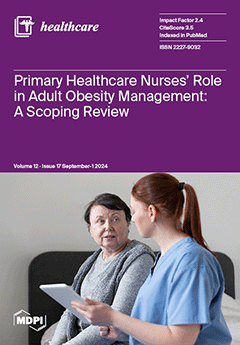(1) Background. A definition of healthcare-associated infections is essential also for the attribution of the restorative burden to healthcare facilities in case of harm and for clinical risk management strategies. Regarding
M. chimaera infections, there remains several issues on the ecosystem and pathogenesis. We aim to review the scientific evidence on
M. chimaera beyond cardiac surgery, and thus discuss its relationship with healthcare facilities. (2) Methods. A systematic review was conducted on PubMed and Web of Science on 7 May 2024 according to PRISMA 2020 guidelines for reporting systematic reviews, including databases searches with the keyword “
Mycobacterium chimaera”. Article screening was conducted by tree authors independently. The criterion for inclusion was cases that were not, or were improperly, consistent with the in-situ deposition of aerosolised
M. chimaera. (3) Results. The search yielded 290 eligible articles. After screening, 34 articles (377 patients) were included. In five articles, patients had undergone cardiac surgery and showed musculoskeletal involvement or disseminated infection without cardiac manifestations. In 11 articles, respiratory specimen reanalyses showed
M. chimaera. Moreover, 10 articles reported lung involvement, 1 reported meninges involvement, 1 reported skin involvement, 1 reported kidney involvement after transplantation, 1 reported tendon involvement, and 1 reported the involvement of a central venous catheter; 3 articles reported disseminated cases with one concomitant spinal osteomyelitis. (4) Conclusions. The scarce data on environmental prevalence, the recent studies on
M. chimaera ecology, and the medicalised sample selection bias, as well as the infrequent use of robust ascertainment of sub-species, need to be weighed up. The in-house aerosolization, inhalation, and haematogenous spread deserve experimental study, as
M. chimaera cardiac localisation could depend to transient bacteraemia. Each case deserves specific ascertainment before tracing back to the facility, even if
M. chimaera represents a core area for healthcare facilities within a framework of infection prevention and control policies.
Full article






